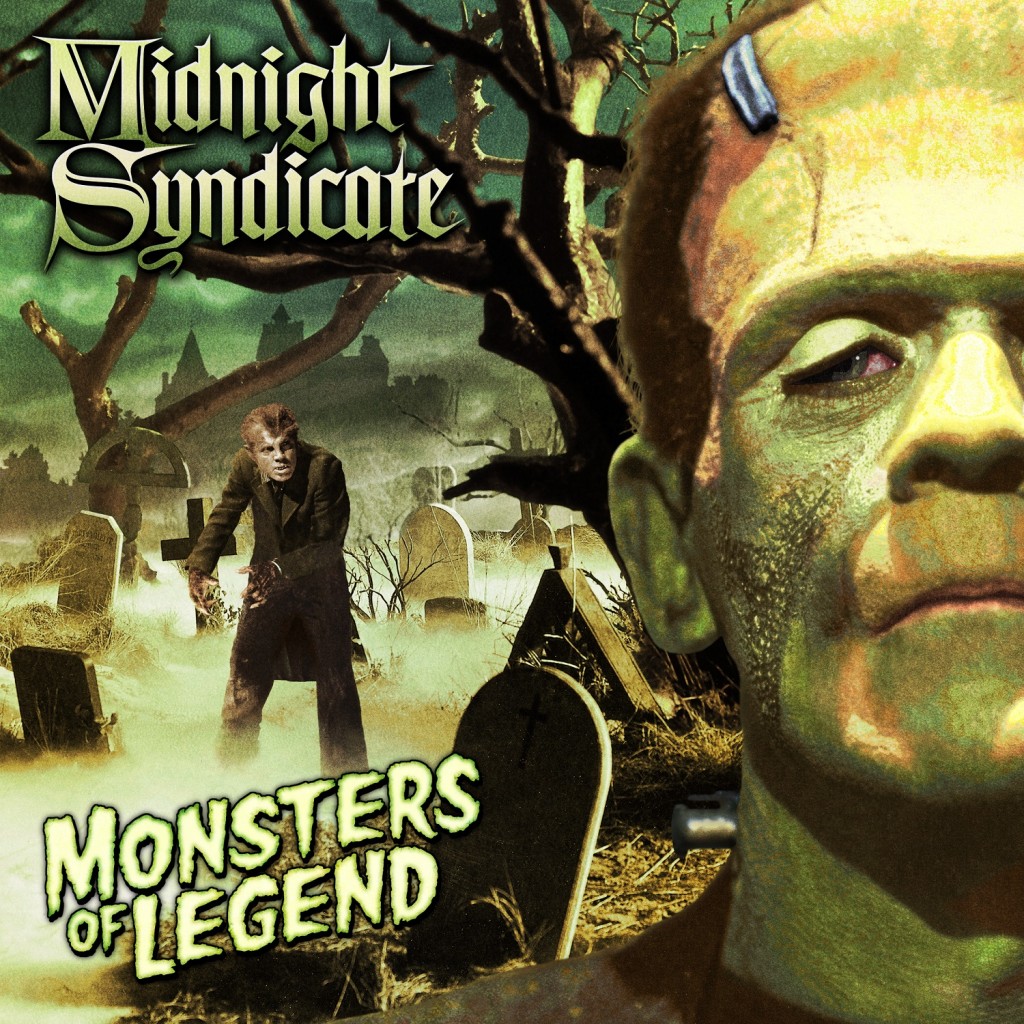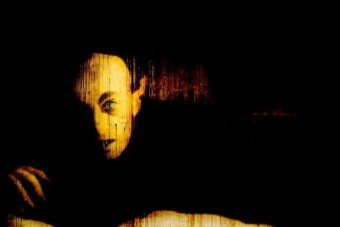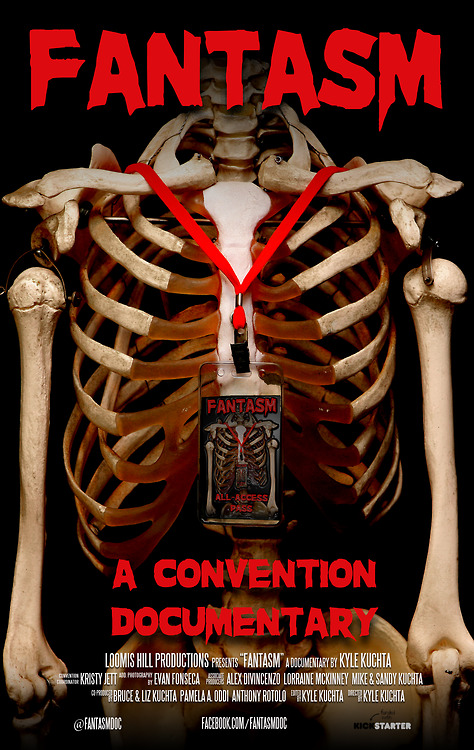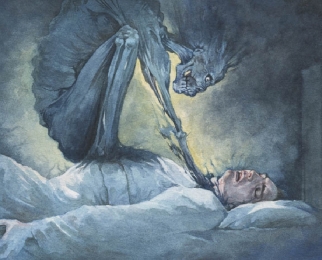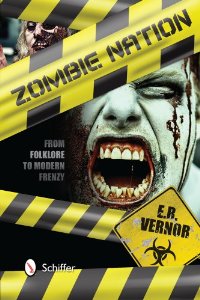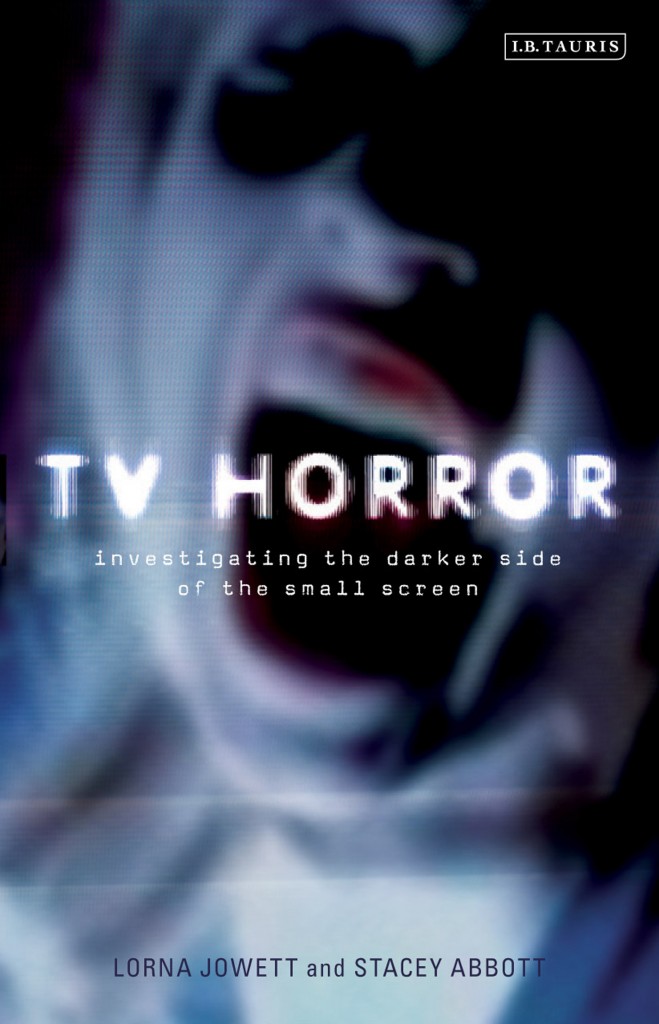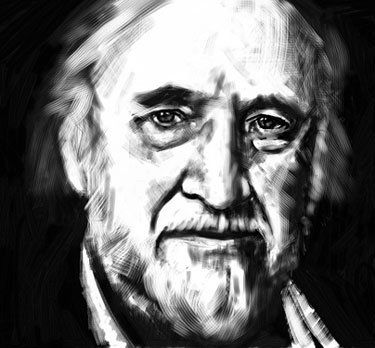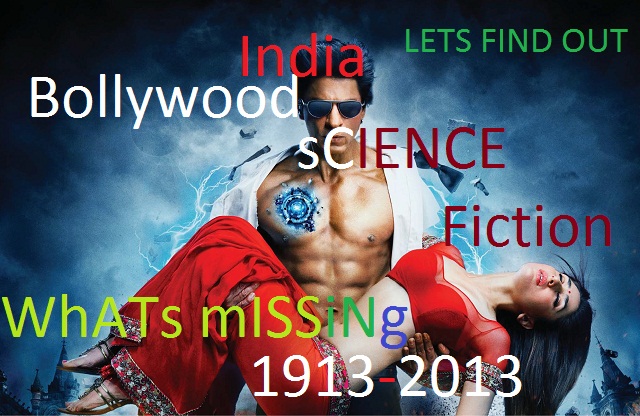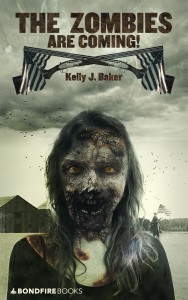 For a while now I have been following the work of my friend and colleague, Kelly J. Baker, and she recently shared a copy of her new ebook with me on zombies and apocalyptisism. The book is titled The Zombies Are Coming!: The Realities of the Zombie Apocalypse in American Culture (Bondfire Books, 2013), and I highly recommend a download for anyone interested in probing the zombie in more depth.
For a while now I have been following the work of my friend and colleague, Kelly J. Baker, and she recently shared a copy of her new ebook with me on zombies and apocalyptisism. The book is titled The Zombies Are Coming!: The Realities of the Zombie Apocalypse in American Culture (Bondfire Books, 2013), and I highly recommend a download for anyone interested in probing the zombie in more depth.
Kelly is also the author of Gospel According to the Klan: The KKK’s Appeal to Protestant America, 1915-1930 (University Press of Kansas, 2011), and a forthcoming cultural history of zombies from the University of Washington Press. – See more at: http://www.kellyjbaker.com/about/#sthash.JPSN01gs.dpuf
Kelly made time in her busy schedule to discuss aspects of her recent book.
TheoFantastique: As a scholar studying American religion and apocalypticism, when and how did zombies come across your radar and bring both of these areas together for you?
Kelly Baker: My first brush with the zombie apocalypse occurred while I was teaching a class called the Apocalypse in American Culture, which pretty much covered end-times theologies in Left Behind, The Turner Diaries, UFOlogy, environmental activism, Heaven’s Gate, Branch Davidians, and pop culture more broadly. What I discovered is that my students were far more interested in talking about zombies and the end than any other topic. They loved zombies. They recommended books, films, and graphic novels, and they wanted to strategize for a zombie apocalypse with me. I tried to convince that I am no help when it comes to preparing for doomsday. This passion my students had for a particular type of end made me very curious about zombies. Why zombies? Why did walking corpses have so much appeal? Why were zombies so popular? And why was this monster most often paired with the end of days? My students caused me to steer my research away from doomsday theologies into the cultural representations of zombie apocalypse and their possible consequences. I would have never imagined that I would write about zombies, but these monsters prove to be a fascinating case study that I can’t walk away from.
TheoFantastique: One of the main threads of your book’s thesis is the importance of apocalypticism in American thought. How might elements of the Christian “end-times” mythos continue to inform this, and how might this connect even to something as seemingly secular as the zombie?
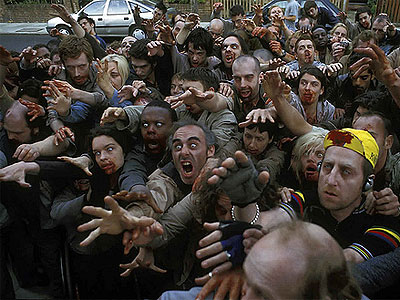 Kelly Baker: The apocalypse is always with us. Americans find the end lurking around all kinds of corners, and we consume ends in theology, entertainment, and politics. Impending doom emerges as a familiar narrative that gets recreated, reimagined, and reassessed in both American past and present. So, yes, I do think apocalypticism is crucial component in American thought and life. More importantly, Christian end-times visions dominated American history and influenced the secular forms of apocalypticism, in which the world is torn apart not by divine force but by human hands. Religious and secular doomsdays are enmeshed in one another in ways that we might not expect. Much of the reason for this is that the apocalypse is a religious genre that voices documents the corruptness of a current moment and a hope for a redemptive future. Secular adaptations of doomsday cannot get away from its religious roots, even though they might try, but they are often more fatalistic in tone. Redemption disappears. The religious moorings of apocalypticism almost haunt secular renditions. Lingering traces of Christian end-times theologies pop up again and again.
Kelly Baker: The apocalypse is always with us. Americans find the end lurking around all kinds of corners, and we consume ends in theology, entertainment, and politics. Impending doom emerges as a familiar narrative that gets recreated, reimagined, and reassessed in both American past and present. So, yes, I do think apocalypticism is crucial component in American thought and life. More importantly, Christian end-times visions dominated American history and influenced the secular forms of apocalypticism, in which the world is torn apart not by divine force but by human hands. Religious and secular doomsdays are enmeshed in one another in ways that we might not expect. Much of the reason for this is that the apocalypse is a religious genre that voices documents the corruptness of a current moment and a hope for a redemptive future. Secular adaptations of doomsday cannot get away from its religious roots, even though they might try, but they are often more fatalistic in tone. Redemption disappears. The religious moorings of apocalypticism almost haunt secular renditions. Lingering traces of Christian end-times theologies pop up again and again.
What I am interested in, then, is the assumed secularity of the zombie and how the zombie apocalypse gets presented as somehow not, or even anti-, religious. Most often I get asked how a religious studies scholar can write about zombies or monsters, and I point out that I have plenty to write about depending upon one’s definition of religion. With my flip answer, I am not trying to say that these monsters are inherently religious, but these monsters become a way to communicate what is human and what is not. David Chidester defines religion as being human in a human place, and I think that zombies give us a way to think about the limits of what we want to call humanity. Additionally, I find the zombie’s relationship with apocalypticism utterly fascinating because it suggests that the boundaries we might imagine between religious and secular are neither firm nor unyielding. The merger of zombies and the end provide an excellent case study for thinking about how doomsday changes to meet the needs of our modern world as well as how we define “religion” and “human” as a categories in a supposedly post-secular age.
TheoFantastique: I remember being fascinated by many of the events in pop culture that you reference, such as the CDC’s use of zombies in disaster preparedness, and the panic among some segments of the population about alleged “zombie attacks.” Christopher Partridge has said the West now features “fact-fiction reversals” where aspects of fictional pop culture cross the blurred line into perceptions of reality. What do you see as contributing to this boundary blurring and crossover with this iconic monster of the day?
Kelly Baker: I wonder if those boundaries that separate fiction and reality were ever really boundaries at all. I am not sure that there is something about our particular moment that leads to “blurring,” but rather that the imagination creeps up on us when we least expect it. Sometimes unreality seems more believable than reality, and sometimes we just wish that reality contained more of the fantastic. My daughter is four, and she inhabits a world of enchantment and possibility, in which fairies can be real, Jack Frost guards children, and the Sandman brings good dreams. It is a lovely space that makes clear distinctions between good and evil with required happy endings. Sometimes, I envy the possibility and enchantment that she sees everywhere, but most often I want her to enjoy what the imagination can offer. The ambiguity of real life often lacks the order and ethics of fantasy. Maybe, we want that possibility and clarity even if we need a bleak zombie apocalypse to bring it. Maybe, we still want to believe in monsters in a world that seemingly lacks mystery, where everything seems known or knowable. Maybe, the arrival of zombies will prove that what we envision our lives to be are not what they actually are.
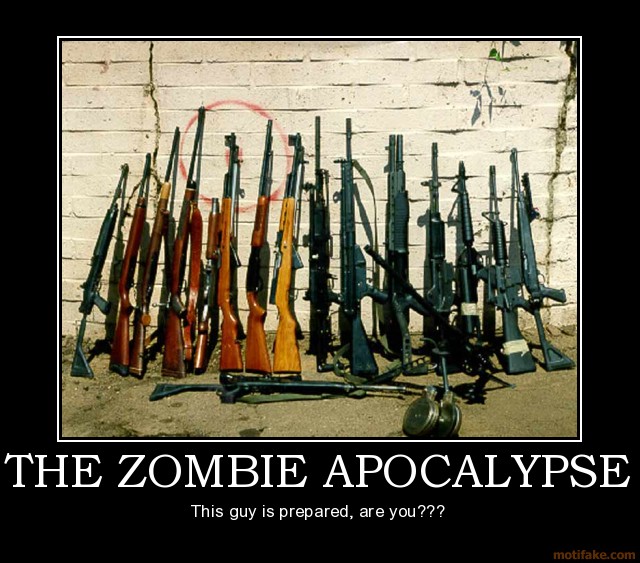 TheoFantastique: One particularly troubling aspect of your book is the discussion of the connection of American gun culture to the zombie. Can you provide a few examples of how this plays out? And from your research, might the living dead and dehumanized zombie through the prevalence of it in film, television and video games contribute to this connection?
TheoFantastique: One particularly troubling aspect of your book is the discussion of the connection of American gun culture to the zombie. Can you provide a few examples of how this plays out? And from your research, might the living dead and dehumanized zombie through the prevalence of it in film, television and video games contribute to this connection?
Kelly Baker: The association between zombies and guns is one that troubles me too. To kill a zombie, the preferred weapon of choice appears to be a gun, and we see many examples of this in film, television, and video games. My husband tends to point out the uncanny aim of human survivors in The Walking Dead; guns become equated with safety and protection. There’s also a glorification of the murder of the undead without much engagement with the ethical concerns in zombie media. The relationship of fictional violence to real violence is complicated, and studies, particularly of video games, come to contradictory conclusions. What worries me is the glee that destroying zombies produces. What are the consequences? How does the destruction of zombies prime us for other forms of destruction and violence?
Crucially, imaginary monsters can lead to actual violence. Just last week, two Arkansas teenage boys were playing a zombie game, and one shot the other in the shoulder with a .40 caliber pistol. In the book, I discuss another incident where a man shot his girlfriend over an argument about The Walking Dead as well as the marketing of zombie guns, ammunition, and targets. Why are we so eager and excited to eradicate them? Why does zombification make destruction of human bodies okay? This process of dehumanization makes me nervous about the consumption and participation in zombie media. What does killing these monsters do for us? Cultural theorist Edward Ingebretsen notes that we “stake” the monster to define what is human. I just wonder what type of humanity we define in every zombie kill.
TheoFantastique: Can you give us a sneak peak of your forthcoming volume on a cultural history of zombies?
Kelly Baker: Of course, I can! The project is tentatively titled, Between the Living and the Living Dead, and it is an exploration of the place of zombies in American culture from White Zombie (1932) until today’s zombie moment. This is a history that seeks to explain how zombies shifted from religious origins to movie star to internet meme and rhetorical stand-in. This study revolves around two questions: What does this cultural nightmare, the zombie, tell us about American culture in the twentieth and early twenty-first centuries? Or to put the question more pointedly, what does the study of this monster show us about the character of American life and the nation’s relationship to religion, violence, war, and consumption? Representations of zombie apocalypses become commentaries on American ethics, globalization, and war, but also communicate visions of the human, the inhuman, and the humane. By tracking zombies, I hope to illuminate the fractures of American public life, both cultural and religious. The consumption of these monsters tells us much about what is valued and what is disdained in our culture at pivotal historical moments in the last ninety years of American history.
TheoFantastique: Kelly, thanks so much for discussing your book here.
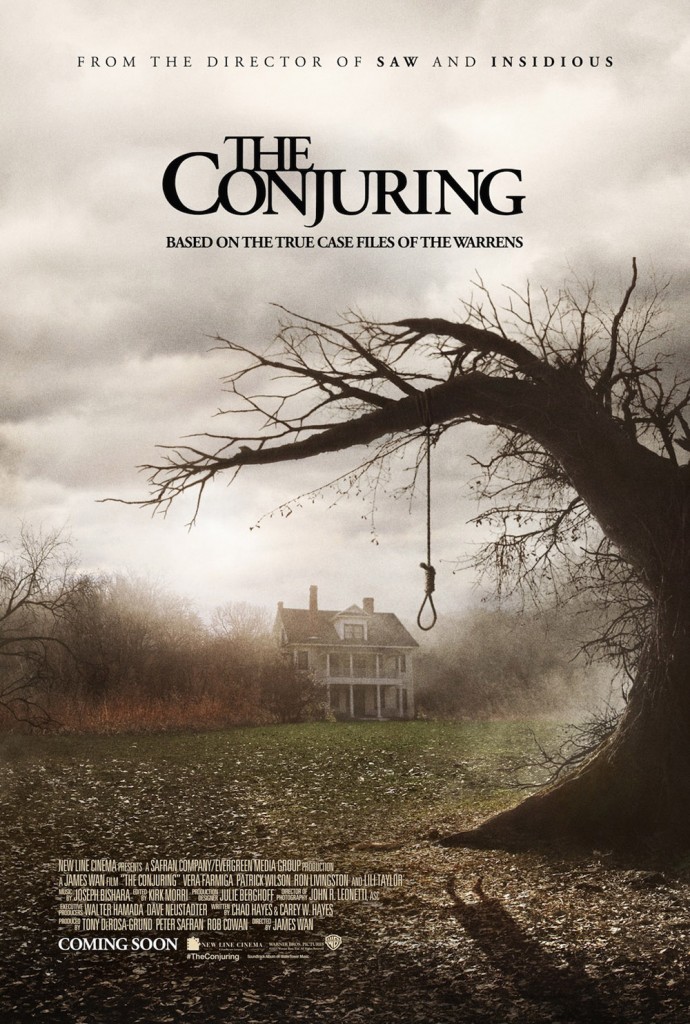 The Conjuring has been the focus of a lot of discussion recently from a variety of perspectives: It surprisingly broke box office records in its debut weekend, beating out much bigger budget movies; Salon.com claimed it was a “right-wing, woman-hating film; two individuals responsible for producing the film stated that they hoped the film, with its metaphysical dualism of God and the devil, would serve an evangelistic function regarding Christianity. But two other areas related to the film have largely been missed outside of narrow discussion circles. One is what to make of the use of “evil witches,” particularly as it relates to the real world Salem Witch Trials as part of America’s problematic religious past. Another is what to make of the present of controversial demonologists and parapsychologists Ed and Lorraine Warren in the film. TheoFantastique hopes to provide commentary on the latter in a future post, but with this guest essay, Heather Greene provides her thoughts on the Witchcraft issues in the film. Greene has a B.A in Film History from Wesleyan University, and an M.A.in Film History and Theory from Emory University. She studied film at both Cornell University and University of Paris. She is also an initiated Wiccan Priestess.
The Conjuring has been the focus of a lot of discussion recently from a variety of perspectives: It surprisingly broke box office records in its debut weekend, beating out much bigger budget movies; Salon.com claimed it was a “right-wing, woman-hating film; two individuals responsible for producing the film stated that they hoped the film, with its metaphysical dualism of God and the devil, would serve an evangelistic function regarding Christianity. But two other areas related to the film have largely been missed outside of narrow discussion circles. One is what to make of the use of “evil witches,” particularly as it relates to the real world Salem Witch Trials as part of America’s problematic religious past. Another is what to make of the present of controversial demonologists and parapsychologists Ed and Lorraine Warren in the film. TheoFantastique hopes to provide commentary on the latter in a future post, but with this guest essay, Heather Greene provides her thoughts on the Witchcraft issues in the film. Greene has a B.A in Film History from Wesleyan University, and an M.A.in Film History and Theory from Emory University. She studied film at both Cornell University and University of Paris. She is also an initiated Wiccan Priestess.